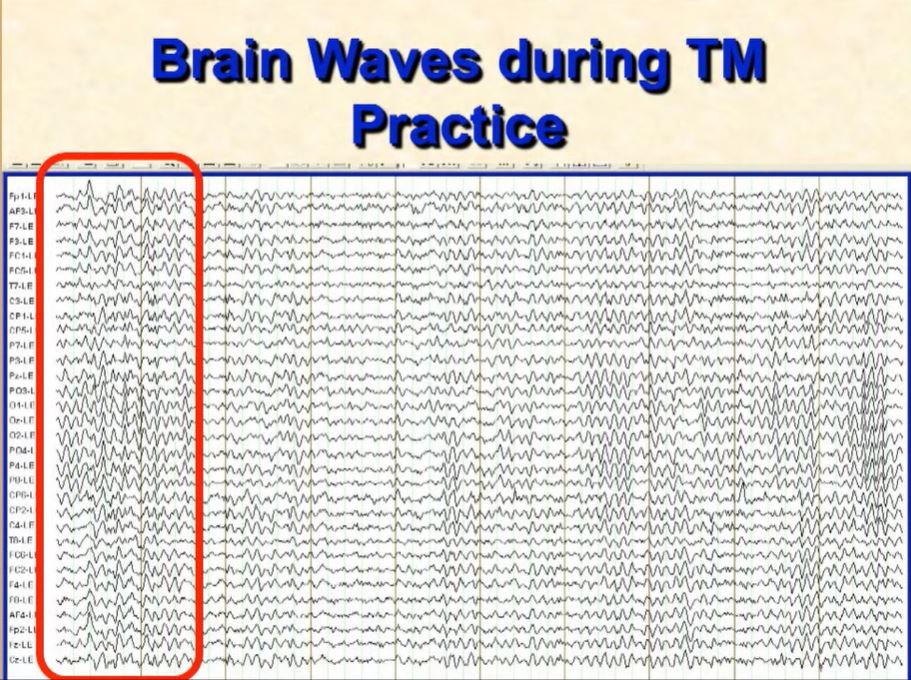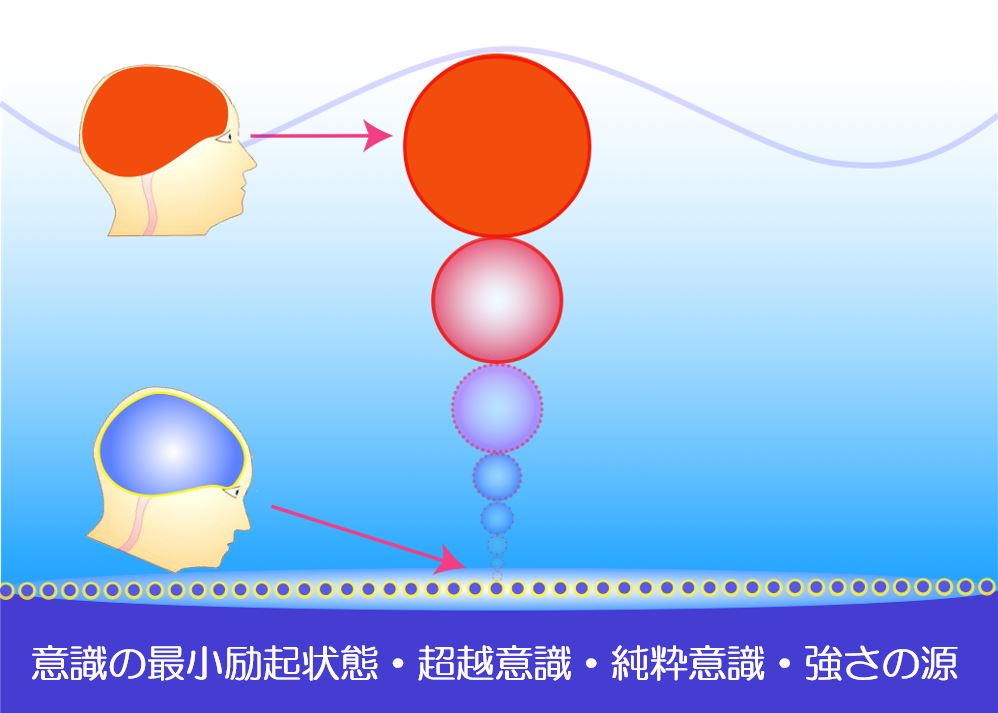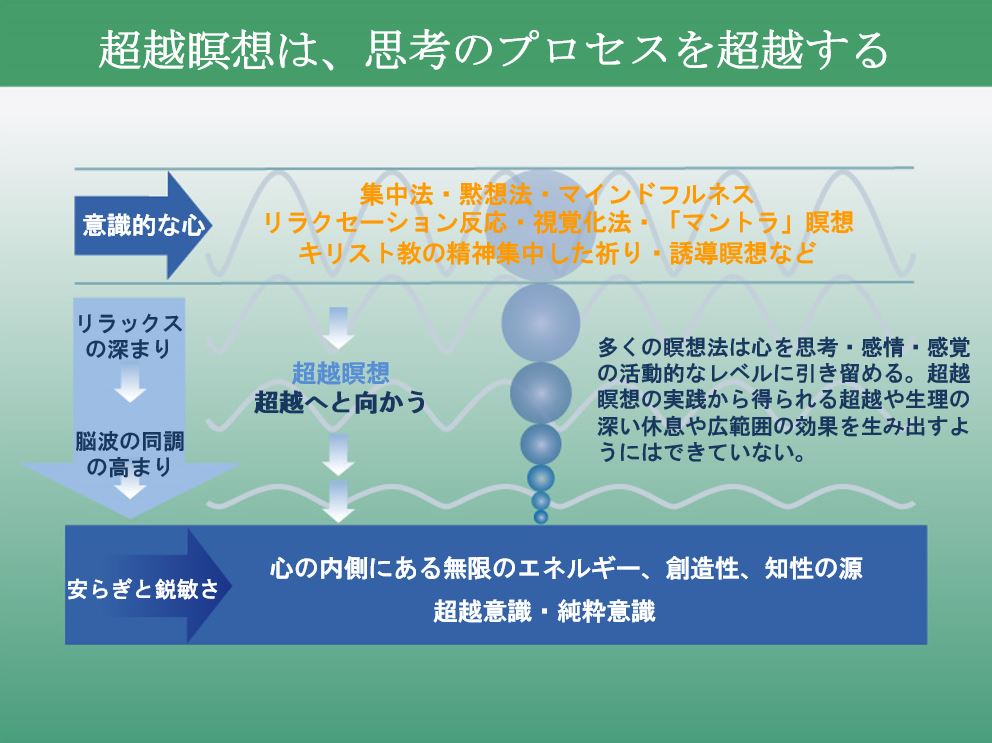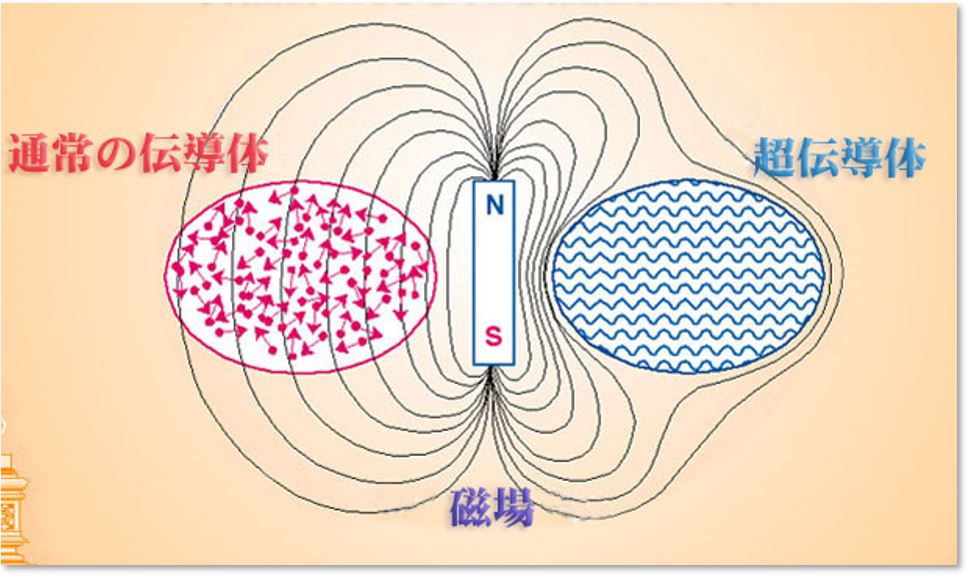下図はTM実習中の脳波図です。脳の異なる32地点からの脳波を計測しています。
縦の細い線は1秒間隔を示します。
脳内の1000億のニューロンが規則正しく同期して1秒間に10回上下(α1)していることが確認できます。
これは、純粋な目覚め、意識が超越意識(サマーディー)を体験しているときにみられる現象です。
パタンジャリのヨーガスートラ第1章、第2節に言う「ヨーガとは心の活動が完全に停止した状態」です。
意識の最小励起状態といえましょう。

TM実習中、意識は努力なく、表面レベルから、より微細なレベル、最も微細なレベル、
そして、その最も微細(精妙)な体験をも超え、想念の無い純粋な意識状態(サマーディ)へと楽に達しやすいテクニックです。

他の瞑想法と超越瞑想の違いを示すチャート
多くの瞑想法は心を思考・感情・感覚の活動的なレベルに引き留めます。
そのため、超越瞑想TMの実践から得られる超越や生理の深い休息や広範囲の効果を生みだすには至らない場合が多いのです。
ですが、禅の達人や、深い祈りによって同じのようにサマーディ(三昧)の体験をされている方は多くいらっしゃいます。
違いは、TMは誰でも簡単に努力なくサマーディの体験を得やすいテクニックであると、科学的調査により証明されている点かもしれません。

他の瞑想法と超越瞑想の違いを示すチャート
超越意識(サマーディ・三昧の体験)と、通常の眠り、夢、目覚めの体験を交互に繰り返していくことにより、
刹那三昧(クシャニカ・サマーディー)から、やがて恒常三昧(ニッティア・サマーディ)へと人間の意識と生理は変化していきます。
超越瞑想の創始者マハリシ・マヘーシュ・ヨーギ―は、ニッティア・サマーディ(恒常三昧)の状態では、
ドイツの科学者ヴァルター・マイスナー博士が発見したマイスナー効果のように、
外部の環境からいっさい影響されない自由な状態となると言います。

参考文献
1. Travis FT, Shear J. Focused attention, open monitoring and automatic self-transcending: Categories to organize meditations from Vedic, Buddhist and Chinese traditions. Consciousness and Cognition 2010;19(4):1110-1118.
2. Orme-Johnson DW. Medical care utilization and the Transcendental Meditation program. Psychosomatic Medicine 1987;49:493-507.
3. Eppley K, Abrams AI, Shear J. Differential effects of relaxation techniques on trait anxiety: A meta-analysis. Journal of Clinical Psychology 1989;45(6):957–974.
4. Orme-Johnson DW, Barnes VA. Effects of the Transcendental Meditation technique on trait anxiety: A meta-analysis of randomized controlled trials. Journal of Alternative and Complementary Medicine 2013;20(5):330-341.
5. Sheppard WD, Staggers F, Johns L. The effects of a stress management program in a high security government agency. Anxiety, Stress, and Coping 1997;10(4):341-350.
6. Abrams A, Siegel L. The Transcendental Meditation program and rehabilitation at Folsom State Prison: A cross-validation study. Criminal Justice and Behaviour 1978;5:3-20.
7. Gelderloos P, Goddard PHI, Ahlstrom HH, Jacoby R. Cognitive orientation towards positive values in advanced participants of the TM and TM-Sidhi programs. Perceptual Motor Skills 1987;64:1003-1012.
8. Alexander CN, Rainforth MV, Gelderloos P. Transcendental Meditation, Self-Actualization and Psychological Health: A Conceptual Overview and Statistical Meta-Analysis. Journal of Social Behavior and Personality 1991;6(5):189-247.
9. So KT, Orme-Johnson DW. Three randomized experiments on the holistic longitudinal effects of the Transcendental Meditation technique on cognition. Intelligence 2001;29(5):419-440.




